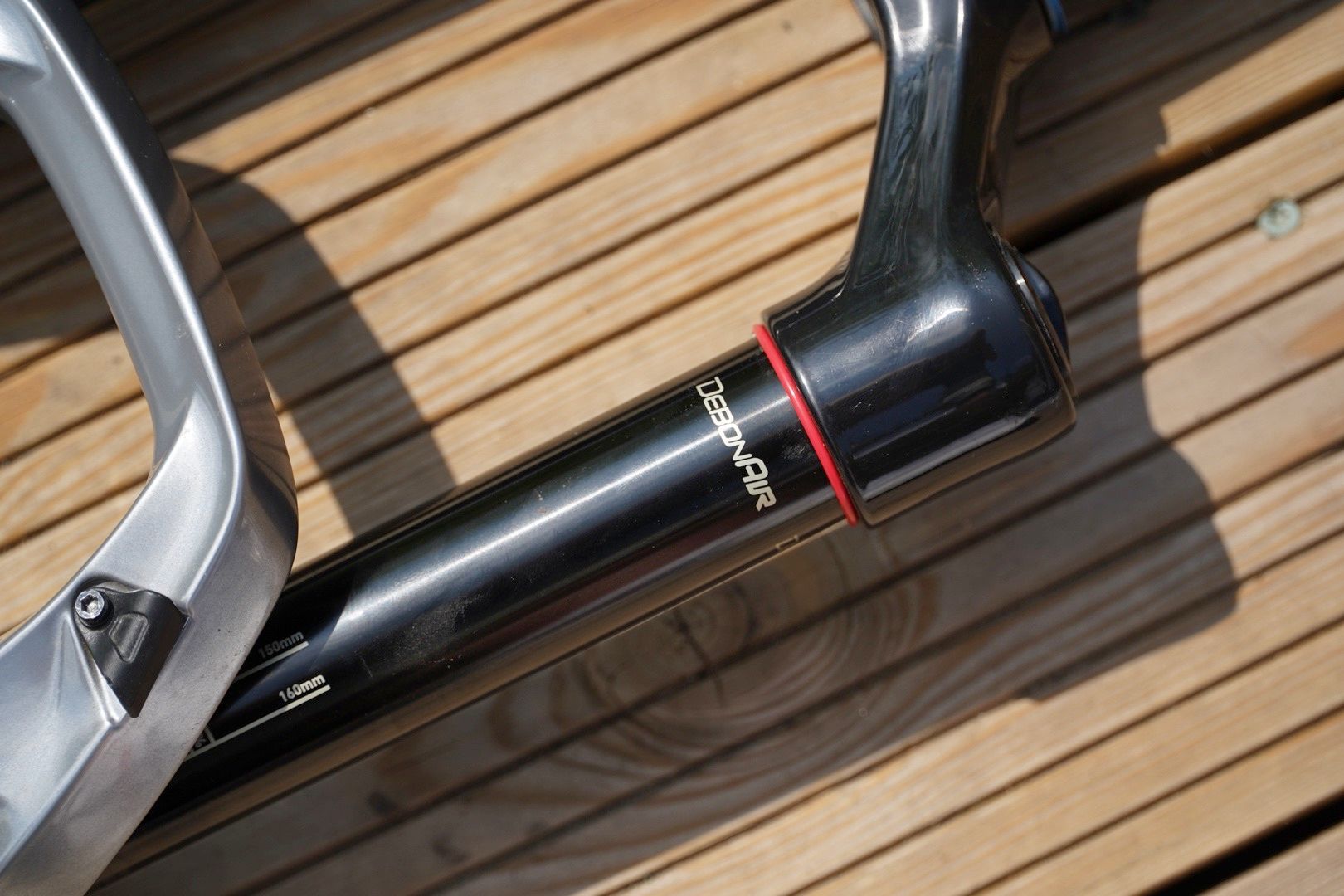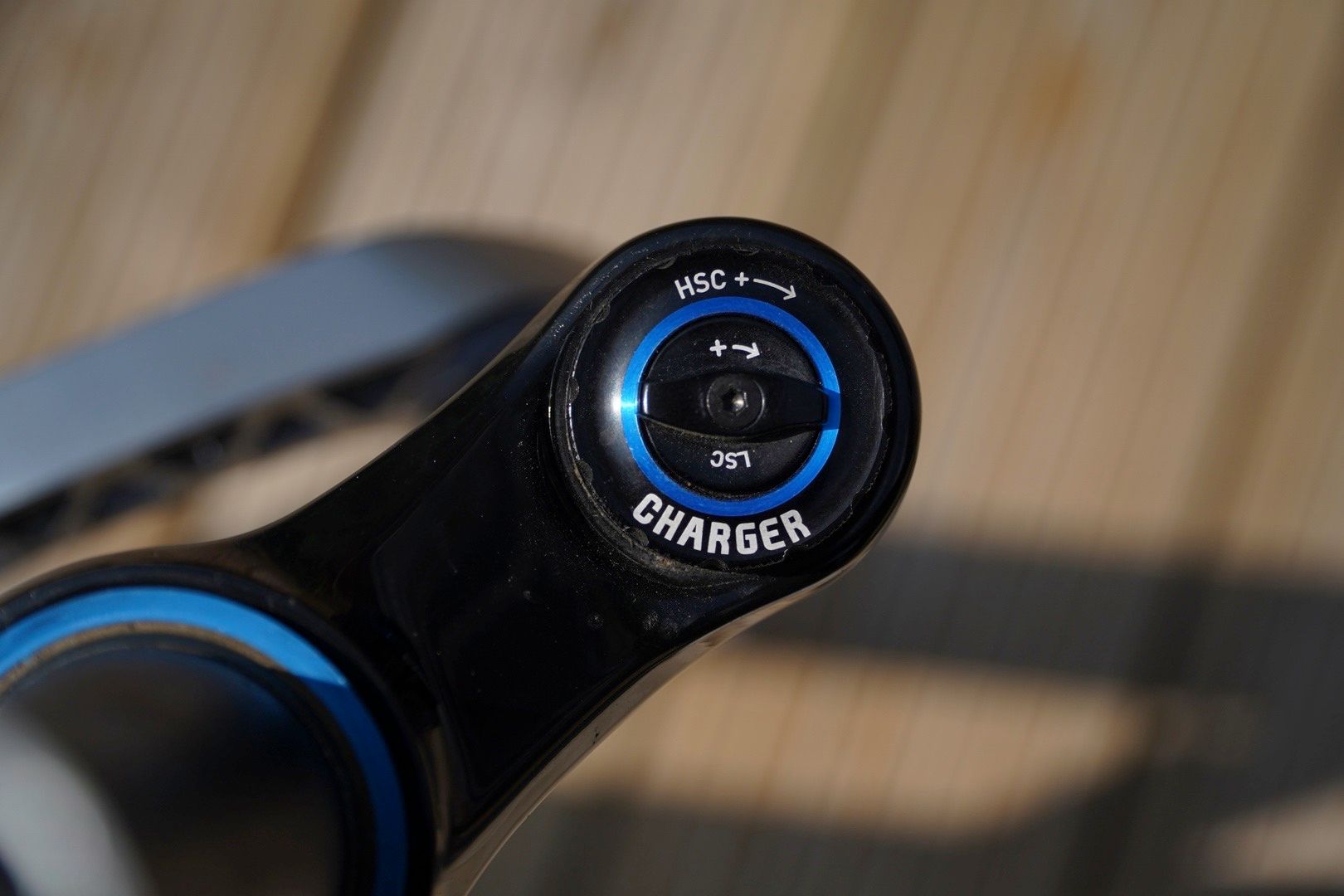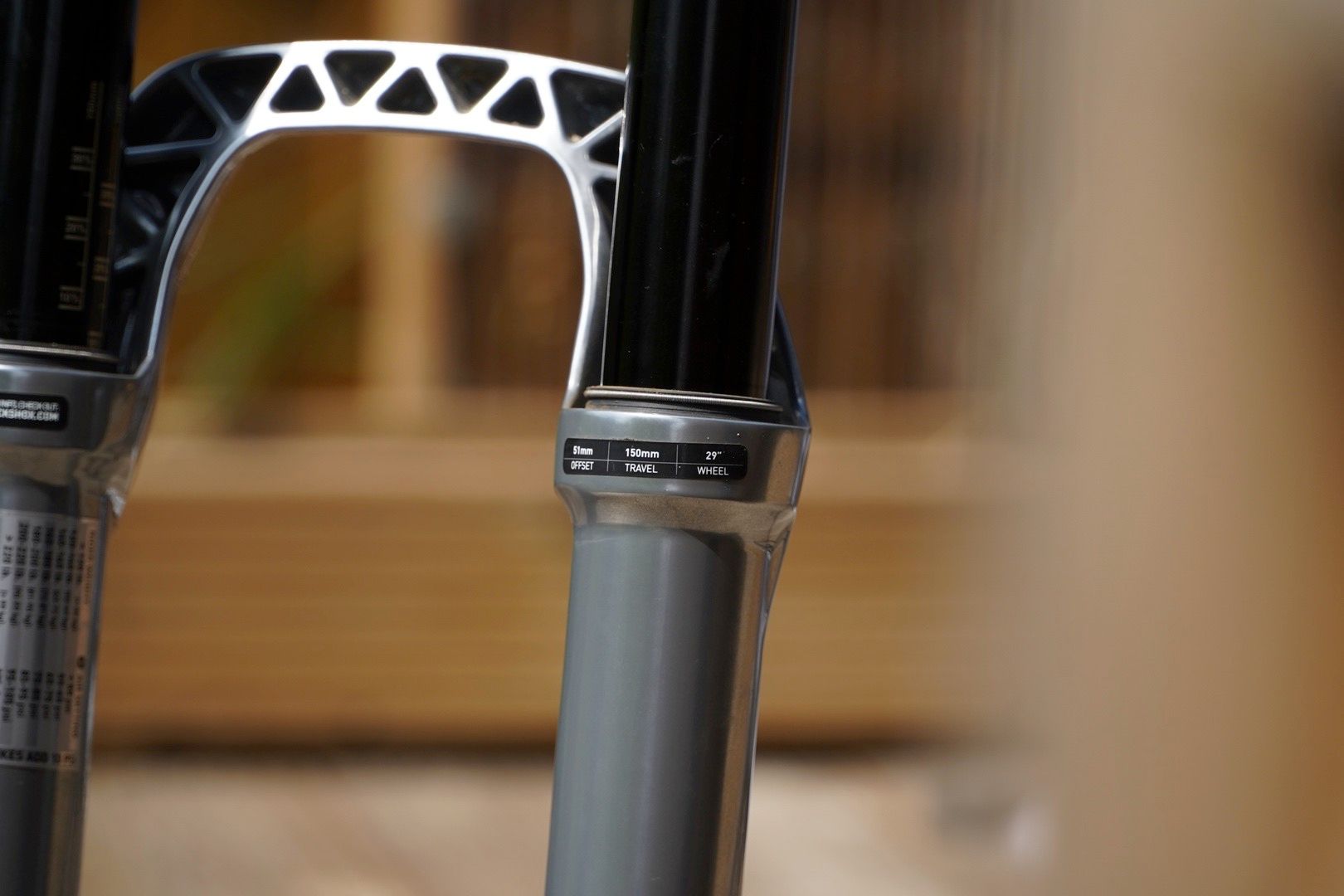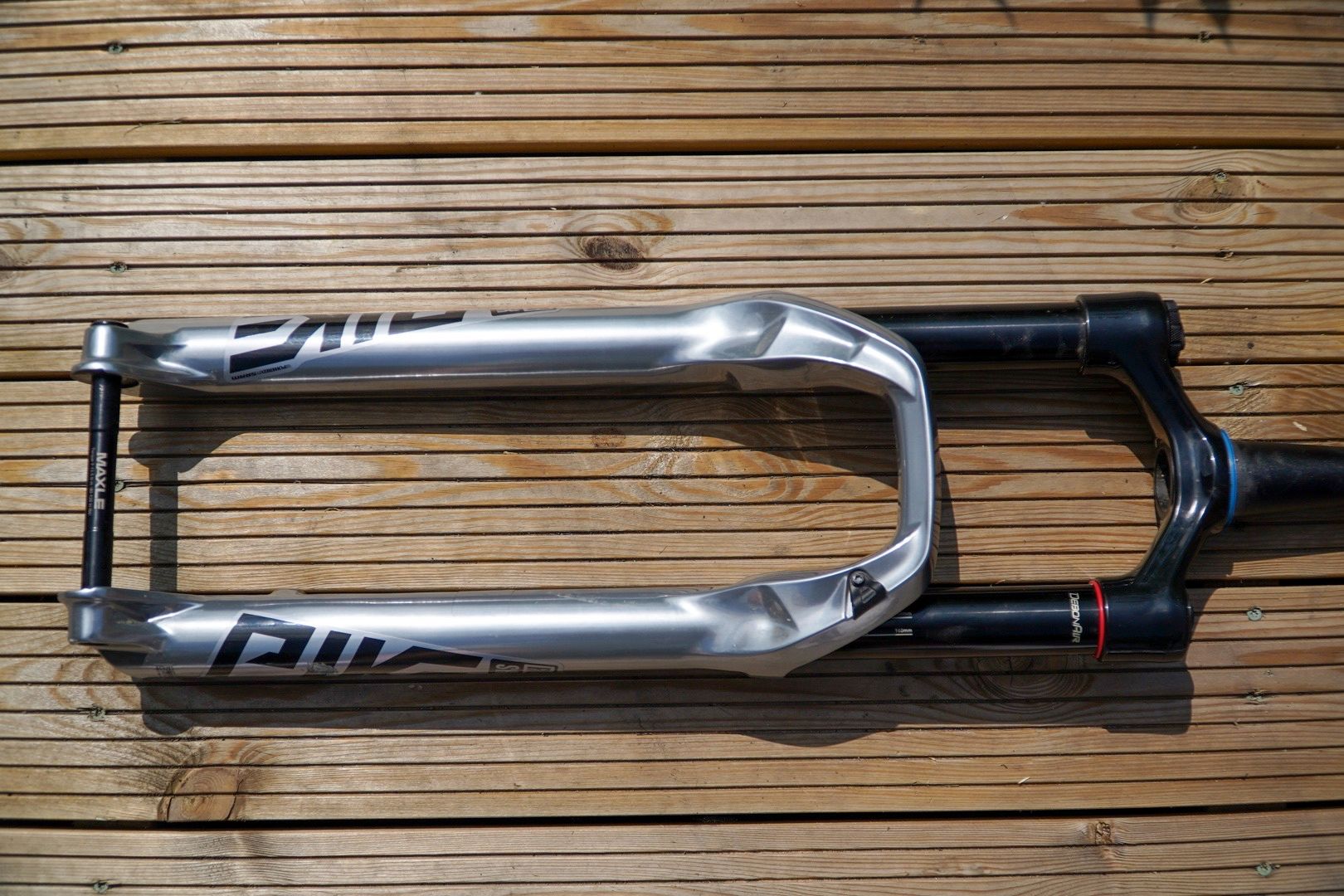The 35mm stanchion RockShox Pike looks positively skinny compared to new school forks, but the latest Pike Ultimate is perfect for trail duties.
Way way back, not Judy DH or even Judy DHO way back, but way-ish back, the RockShox Pike was aimed at enduro riders wanting a stiff chassis, and gobs of big mountain performance. Over the years though the Pike has been overshadowed by the Lyrik, and more recently the Zeb with a stanchion size even larger than the Boxxer DH fork. Despite this, the Pike is still relevant, and perhaps today more than ever.
The past year or so has seen a resurgence of aggressive short-travel bikes. The types of bike that will easily outclimb a traditional enduro bike then outshine that same enduro bike on the way back down again (at least with the right rider on board). This ‘new’ trail segment, is where the latest Pike thrives.
RockShox Pike Ultimate – Features
The Pike is still a 35mm stanchion fork, and all of the latest updates are compatible with earlier forks. So if you have an older Pike, instead of buying a new one you can simply update the seals, oil, Debonair Spring and Charger damper and enjoy the latest features.
Latest Singletrack Merch
Buying and wearing our sustainable merch is another great way to support Singletrack

Externally there are no changes between this Pike and earlier ones. It still has fast black, super-slick stanchions, and the chassis is still that bright chrome gloss finish, but focus on the details and take it for a lap of your local trails and you’ll appreciate that RockShox hasn’t tried to reinvent their classic.
SKF seals are one of the updates on the newer RockShox Pike fork. It might not seem like much, but the addition of these super-slick seals reduces friction and the amount of force required to get the fork moving. New Maxima fluid in the updated damper is chosen to make for a quieter fork, it also offers better lubrication too and along with those seals keeps the Pike buttery smooth.
Delve deeper inside the fork and you’ll uncover the latest Debonair C1 air spring. This basically consists of a longer foot nut and a deeper seal head. This lifts the position of the air-spring so it is in line with the dimple between the positive and negative air chambers. It’s a very simple and affordable upgrade and the result is a fork that sits higher in its travel while retaining small bump compliance. RockShox even did a number on the Charger Damper 2.1 to reduce friction, which RockShox claims reduces hand tiredness and fatigue.

My test fork is the Pike Ultimate RC2 which boasts adjustments for independent high and low-speed compression. There’s also a single rebound adjustment, rather than high and low-speed options, and on the air-spring side, the Pike can still accept bottomless Tokens for tuning progression.
While I’m classing the Pike as a trail fork, there are a vast array of travel options from 120-160mm suiting riders from cross-country, trail and enduro and RockShox still offers the Pike in both 27.5 and 29er options. Our test fork is a 150mm travel 29er.
RockShox Pike Ultimate – Setup
RockShox forks are generally super easy to set up. The fork has a sticker on the side with suggested air-pressure settings based on rider weight, and the RockShox Trailhead webpage offers some info on what other settings you could use as a start point.

What’s really handy are the sag indicator markings on the stanchion which speeds up set up without the need of a ruler, or vernier calipers.
I have ridden the Pike Ultimate on my YT Izzo (Yes, a 150mm fork on my 130mm bike) and they now live on the front of the Cotic BFE Max which suits the bike better than the 160mm Fox 36 I originally built it with.
As I find with most modern forks, the base settings are generally a good start. I tend to ride with the compression left open and just a few clicks of low-speed.
RockShox Pike Ultimate – The Ride
I’ve spent a lot of time on Fox forks this past year or so, but jumping back on the Pike reminded me of what I love about RockShox’s trail fork. Fox forks generally feel better at gobbling up terrain and hugging the ground, whereas the Pike feels ‘lively’ and more eager to pop around. Which you prefer really comes down to your riding preference and how and where you ride, but I like both and enjoy the distinctive characteristics of each.

I never really felt that the older Pike was particularly sticky off the top, but the new Pike with Maxima fluid and new SKF seals is very active over small to medium bumps, fluttering over the trails very nicely indeed with very little force needed to get those chrome lowers sliding over the slick black stanchions.
What you do immediately feel is how the new Debonair Air Spring holds the fork higher in its stroke. The bike sags as it should, but when sprinting, climbing or pointing the front end down a steep trail you can feel that the Pike sits higher. This puts you in a better position for steep riding, especially for sitting on the front wheel without diving through your travel too quickly. This combination of higher ride height and sensitive small bump performance equals bucket loads of grip on loose dirt and muddy corners, enhancing confidence, speed and smiles.
Although the Pike sits higher, it’s still possible to use all of its travel without a harsh bottom out, and because it sits higher it gives the impression of a longer travel fork.
I have some pretty long and rough downhill trails close to home, and the Pike never left me wishing for more. The damper handles repeated big hits extremely well, ensuring the bike never loses control or is bounced off line. Even after a whole day of repeated big hit runs, my hands and arms never felt fatigued with arm pump, so those changes to the damper seem to work.

In terms of the chassis stiffness, well I’m no longer the lightweight boy I once was, but even at my larger size, I don’t feel any flex from the 150mm travel Pike. I’ve certainly ridden stiffer forks, but that’s not to say that the 35mm chassis isn’t stiff enough.
Things we loved
- Tons of choice for travel, and still available in 27.5.
- Great range of adjustment.
- Small improvements add up to a really big change.
Things we would like to see
- Really grasping at straws here…
Overall
The RockShox Pike might not have the updated CSU of the Zeb or huge new stanchions, but really it doesn’t need them. The 35mm chassis is sorted and each of the small improvements adds up to one seriously impressive trail fork. Best of all each of the upgrades found on the new Pike are compatible with older Pike, Yari and Lyrik forks, so perhaps you don’t need a new fork, after all, perhaps all you need is a service some new seals and that Debonair C1 instead?




